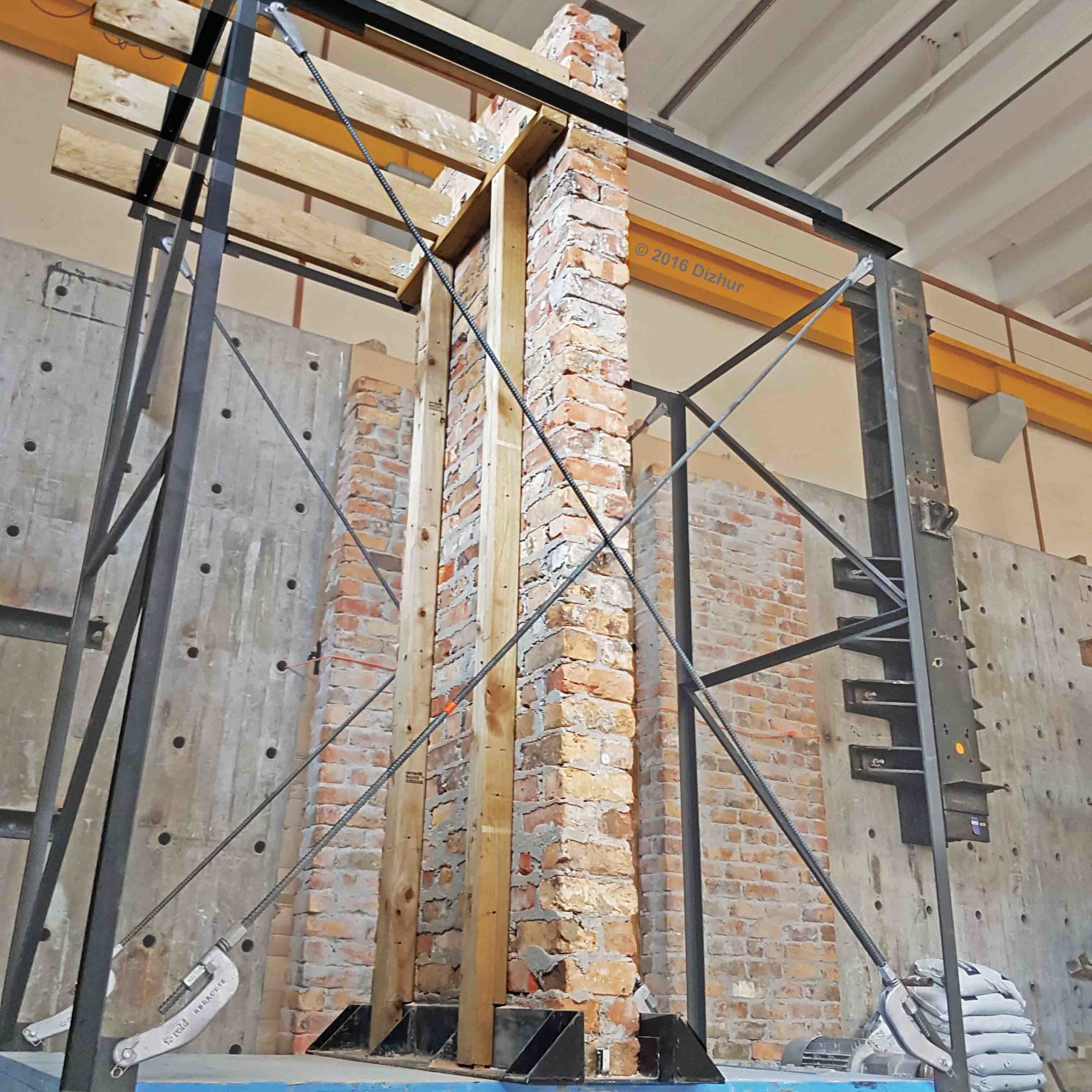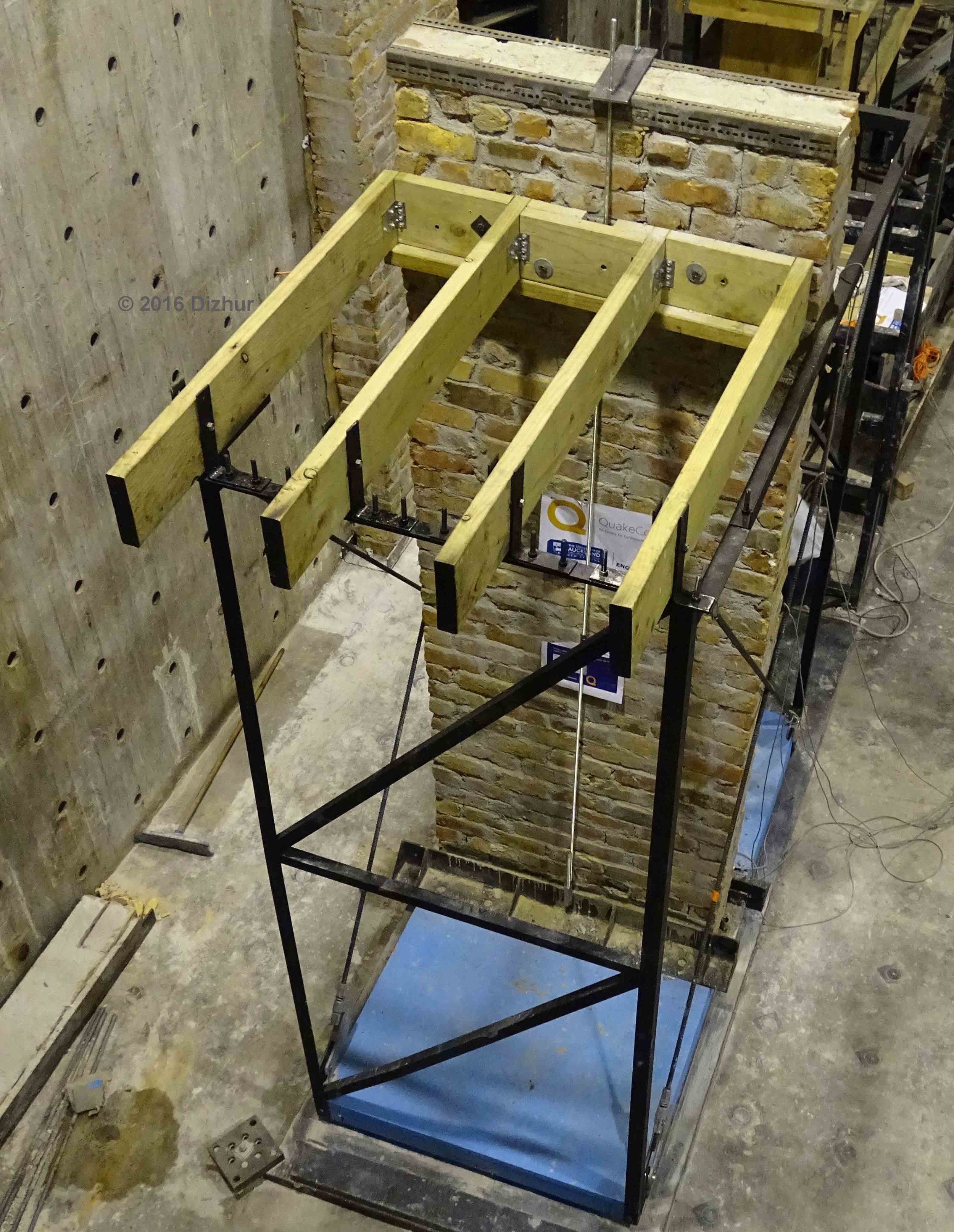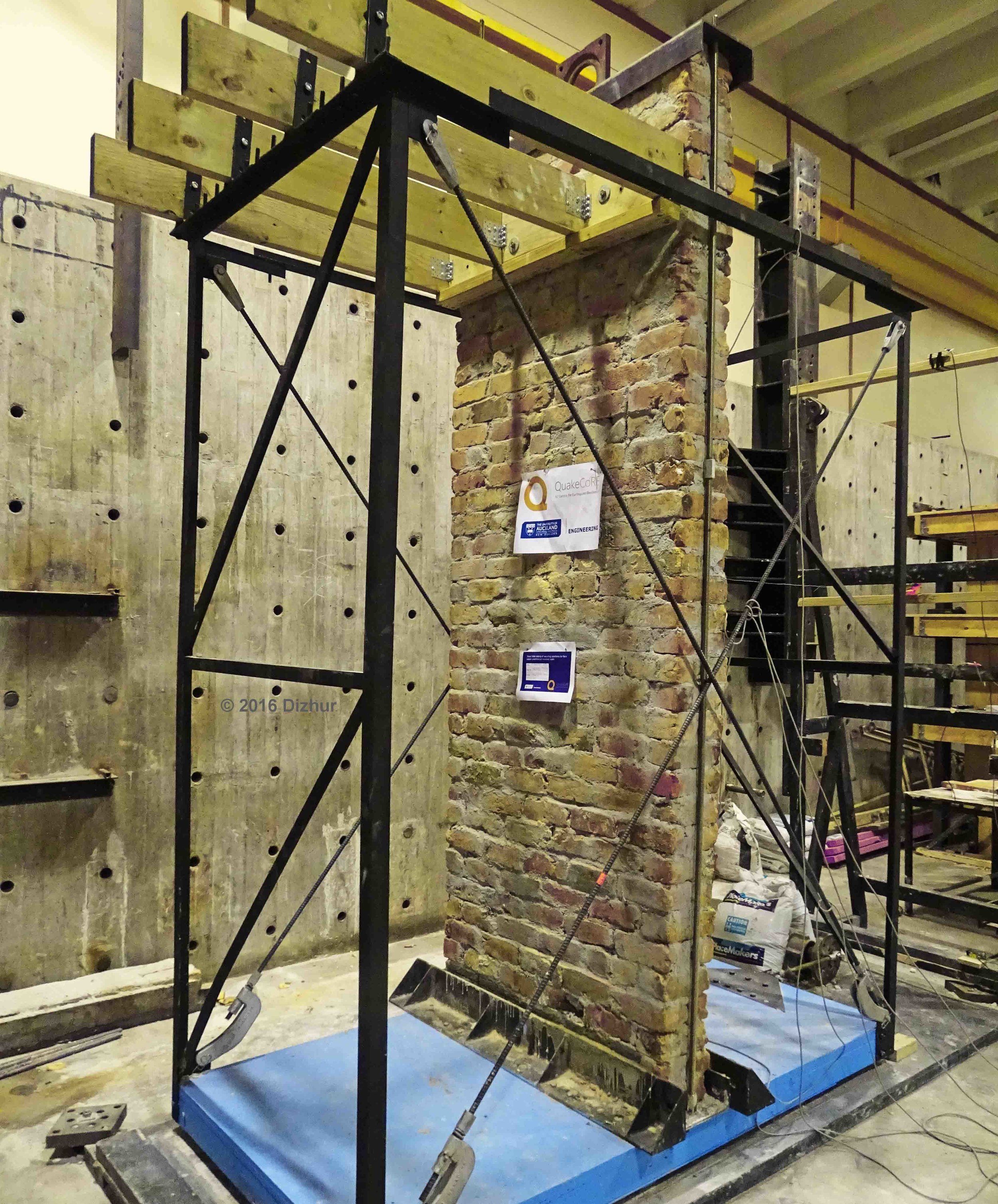SECURING SOLUTIONS FOR FACE-LOADED CLAY BRICK URM WALLS
IN 13th Canadian Masonry Symposium, HalifaX
Scope and methodology
Out-of-plane failures induced by earthquake loads are one of the most critical deficiencies of clay brick unreinforced masonry buildings.
Shake-table testing of three full-scale double-leaf solid clay brick masonry walls in as-built and strenghtened conditions.
Retrofit techniques investigated were the use of strong-backs and of post-tensioning.
FINDINGS
The critical failure mode for the as-built wall was one-way bending in the out-of-plane direction with crack formation at three quarter-height.
The most effective mitigation system was the use of 90 x 45 mm timber strong-backs from wall base to parapet top, which allowed flexural behaviour with a significant reduction in displacement and an increased PGA of three times the as-built condition.
Prestress losses associated with URM wall retrofit using threaded steel rods would eventually cause the wall to behave similarly to the as-built condition, resulting in one-way bending failure. Therefore, prestressed steel rods must be periodically checked and restressed if required. It was also observed that with reversing cycles of shaking the weak lime based mortar joints settled/compacted significantly, reducing the effectiveness of the vertical steel rods.
External post-tensioned steel rods reduced installation cost and complexity and provided a good alternative securing technique, providing better results when compared to the mid-cross-section alternative, mainly due to significantly increased leaver arm as a result of external positioning.



